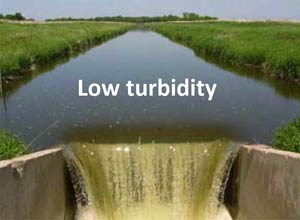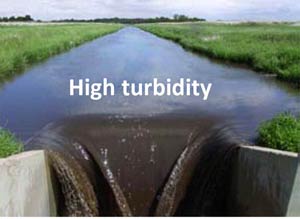
WATER QUALITY PARAMETERS
Total Suspended Solids | Nitrate-Nitrogen | Total Phosphorus | Ortho Phosphorus | E. coli Bacteria
TOTAL SUSPENDED SOLIDS (TSS)
A direct measurement of the concentration of suspended particulates in the water, inorganic or organic.
The transportation of sediment is a natural function of rivers, however, excessive amounts of sediment degrade the ecological health and aesthetics of the Minnesota River and its tributaries. When suspended sediment is elevated, turbidity increases, water clarity decreases, and light penetration is reduced. Reduced light penetration shifts stream productivity away from beneficial periphyton (mixture of algae, cyanobacteria, heterotrophic microbes, and detritus that is attached to submerged surfaces in most aquatic ecosystems) and favors undesirable floating algae. An overabundance of floating algae (phytoplankton) further increases turbidity, compounding the problem. Fine-grained sediments that settle on stream beds cover and degrade the desirable rock and gravel substrates that form essential habitats for invertebrates and fish. Sediment also carries nutrients, pesticides and other chemicals with it that may negatively impact fish and wildlife. During periods of high turbidity, streams take on a murky brownish-green cast, greatly reducing their appeal to people who enjoy water-based recreational activities such as boating, fishing, or swimming.

